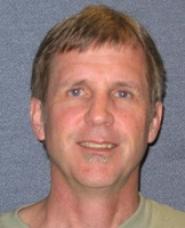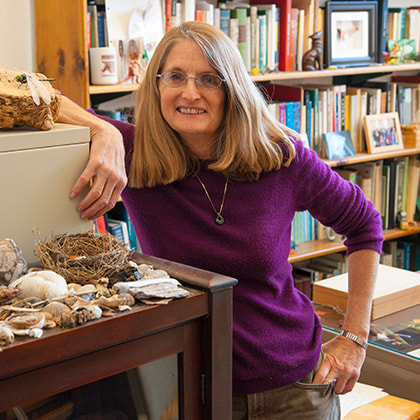Presidents' Award for Lifetime Achievement
The Presidents' Award for Lifetime Achievement is given to a person who has made outstanding and sustained contributions to the field over the course of many years. The recipient is selected by the three Presidents of the Society (President, President-Elect, and Past President). The interval between presentations of this award must be at least three years.
David L. Swofford (1998)
|
The first award was presented to Dave Swofford in 1998. Systematists of a certain age will fondly remember the happy times spent resetting the date on their Macs in order to squeeze a little more life out of their beta copies of PAUP*. Swofford's PAUP program has had (from 1989 onward) a profound influence on the types of phylogenetic analyses possible in systematics. (Image from Duke Biology Department web site.)
|
Joseph Felsenstein (2002)
|
The second award was presented to Joseph Felsenstein in 2002. Joe is the author of the PHYLIP package, the book
Inferring Phylogenies (2004), and a pioneer in the use of statistical methods in phylogenetics. In particular, his 1981 paper Evolutionary trees from DNA sequences: A maximum likelihood approach (Journal of Molecular Evolution 17:368–376) laid the groundwork for all maximum likelihood and Bayesian phylogenetic methods used today. (Image from University of Washington Genome Sciences Department web site.) |
Ziheng Yang (2008)
|
The third award was presented to Ziheng Yang in 2008. Early in his career, Ziheng introduced the now ubiquitous discrete gamma among-site rate heterogeneity to phylogenetics, and later pioneered the use of Bayesian methods in phylogenetics. In addition to many contributions to the primary literature of molecular evolution and phylogenetics, Ziheng has long maintained his influential software package PAML and authored two important books: Computational Molecular Evolution (2006) and Molecular Evolution: A Statistical Approach (2014). (Image from Center for Computational and Evolutionary Biology, Institute of Zoology, Chinese Academy of Sciences)
|
David Hillis (2012)
|
The fourth award was presented to David Hillis in 2012. David Hillis has contributed greatly to SSB and to the field of systematics in many ways. In 1990, as Editor of Systematic Zoology, he spearheaded the replacement of "Zoology" with "Biology" in the name of both the society and the journal. The 1990 book he co-edited with Craig Moritz and the 1996 second edition that added Barbara Mable as an editor, Molecular Systematics, served for more than a decade as the primary textbook for modern systematics and phylogenetics. David served as President elect, President and Past President of SSB from 1993-1995. Many of leaders in the Society and in the field of systematics have been trained in the Hillis lab, including 4 Mayr Award winners (McGuire, Poe, Messenger, and Huelsenbeck) and 1 past president (Huelsenbeck).(Image from University of Texas College of Natural Sciences website.)
|
David and Wayne Maddison (2016)

The fifth and sixth awards were presented jointly to Wayne and David Maddison in 2016. As collaborators or individually they have been the creators of many of the core methods and software at the heart of modern systematics, investigating everything from character coevolution to diversification processes to estimates of gene flow. Their software includes Mesquite, MacClade, and the Tree of Life Web project (TOLWeb). They also co-developed (with David Swofford) the NEXUS file format, widely used for storing data and other information for systematics. David served as President of SSB in the year 2000. They are also noteworthy for their long term focus and care for their research organisms. Their passion began through encounters with salamanders and mayflies, sidewalk beetles and cecropia moths, unexpected jumping spiders and dashing tiger beetles, inspiring a life-long research program on species discovery and phylogeny of jumping spiders (Wayne) and ground beetles (David).
Chris Simon (2020)
|
The seventh award was made to Chris Simon in 2020 and presented at the Virtual Evolution meetings in 2021. Chris is widely recognized as a world expert on cicada phylogenomics and evolution with a special interest in periodical cicadas and New Zealand cicadas. She has a distinguished record of contributions at the interface of systematics theory and applications, and her work, has been influential in guiding methodological development of techniques for molecular phylogenetics. Chris also had an early and ongoing role in promoting citizen science and science outreach. She has been a tireless advocate and promoter of the activities of SSB, with continuous involvement in society activities from 1993 onward, including service as a member of various committees including Nominations (1993, 2009, 2016-2019), SSB/SSE joint council (1998-2001), Mayr Award (1994) and Legacy (2022). She served as Program Director (1995-1998), Secretary/EVP (1998-2001), Editor Elect then Editor of Systematic Biology from 2000-2004, and as President-Elect, President, and Past-President from 2006-2008. One of her PhD students was a past SSB President and Editor (Sullivan) and one of her grandstudents was past Editor (Carstens) and another a council member (Marske). (Image from UConn Today).
|





